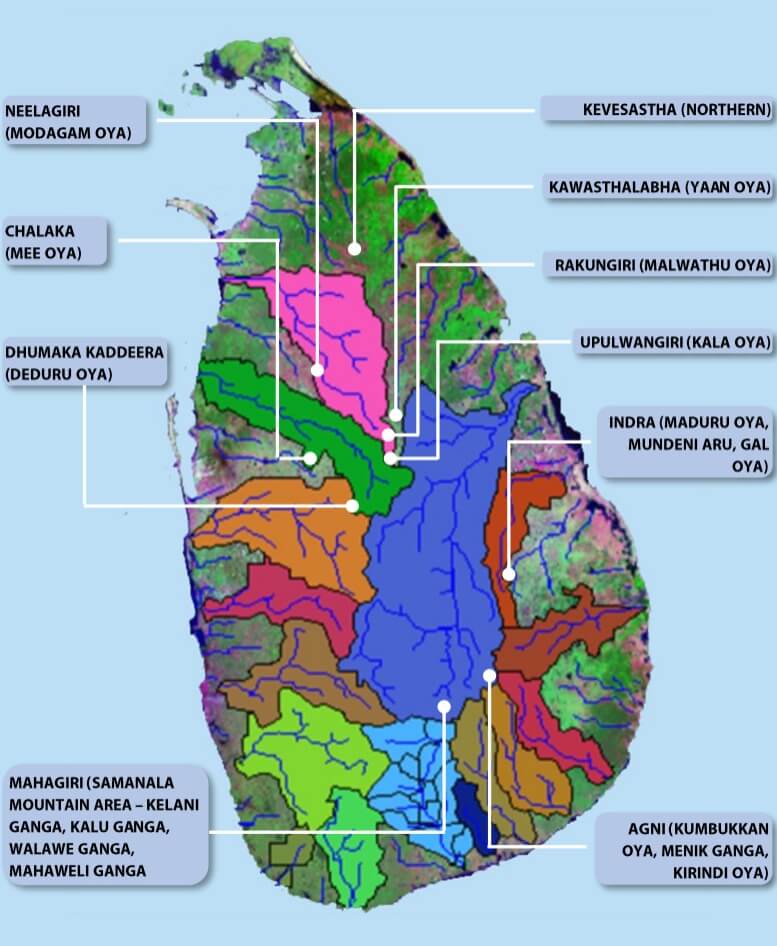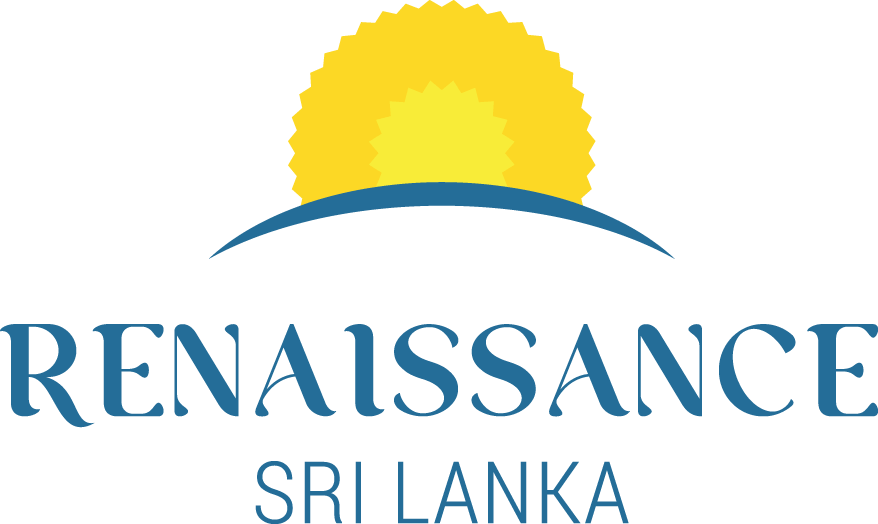
The journey towards revolutionizing Sri Lanka’s agriculture entails adopting a holistic approach to farming sustainability.
Sri Lanka’s ancient civilizations were masterful in their utilization of natural resources, especially water, to sustain agricultural productivity and community health. Centered around the island’s 103 rivers and many artificial tanks and reservoirs, these holistic farming methods optimized land and water use in a way that modern techniques often fail to replicate. The success of these ancient practices can be attributed to a river basin approach, which contrasts sharply with the modern administrative boundaries approach that dominates contemporary water and land management. By re-adopting a river basin and agro-ecological approach, Sri Lanka has the potential to revitalize its agricultural sector and ensure sustainable development. 
The Legacy of Ancient Water Management
Sri Lanka’s ancient rulers were highly cognizant of the island’s geophysical, geospatial, and hydrological dynamics. They developed an intricate system of tanks and reservoirs that worked in harmony with the natural flow of rivers, ensuring efficient water management and distribution. These systems are considered marvels of engineering, unparalleled even by modern standards. The Indus, Nile, Yangtze, and Euphrates River civilizations similarly optimized their agricultural systems around water bodies, highlighting a universal understanding of the critical role water plays in sustaining life and civilization.

Ten ancient administrative divisions based on Sri Lankan Hydrology (3000BC – 6000BC) © Hector Kobbekaduwa Agrarian Research and Training Institute
The key to these ancient successes was a comprehensive understanding and management of entire river basins, rather than isolated segments or regions. This approach ensured that water was used efficiently and sustainably from the upstream sources to the downstream areas, creating a balanced and resilient agricultural system.
What are the key challenges of modern Sri Lankan administrative boundaries
In contrast, modern Sri Lanka has seen a shift towards managing resources within the confines of administrative boundaries. This shift has led to fragmented and often inefficient water management practices, resulting in significant environmental degradation. Polluted water bodies, damaged watersheds, and wastage of water resources are rampant, reflecting a departure from the sustainable practices of the past.

Damaged watersheds © Renaissance Sri Lanka
Administrative boundaries do not align with natural hydrological and ecological systems. This misalignment leads to disjointed policies and practices that fail to address the interconnected nature of ecosystems. For instance, an intervention in an upstream region may have downstream effects that are not considered or managed, leading to a cascade of environmental issues.
What is the River Basin Approach?
Reverting to a river basin approach requires a fundamental rethinking of how water and land are managed? This approach involves treating each river basin as a single, integrated system where all components are interdependent. The dynamics of upstream and downstream water management must be considered collectively, ensuring that interventions are beneficial to the entire basin community.
One of the primary advantages of a river basin approach is its alignment with natural hydrological cycles. By managing water resources at the basin level, it is possible to optimize the availability and quality of water throughout the entire system. This holistic management can lead to improved agricultural productivity, enhanced biodiversity, and greater resilience to environmental changes.

Sri Lankan Argo-ecological zone map © Hector Kobbekaduwa Agrarian Research and Training Institute
How to integrate Agro-Ecological Zones?
Sri Lanka’s diverse agro-ecological zones, which are defined by variations in climate, soil, and topography, add another layer of complexity to agricultural management. Integrating these zones into a river basin approach can enhance the effectiveness of water and land management strategies. Each agro-ecological zone has specific requirements and characteristics that must be considered to optimize agricultural production and sustainability.

Sri Lankan Argo-ecological soil map © Hector Kobbekaduwa Agrarian Research and Training Institute
A pilot strategy that selects representative micro-geographies within each of the 22 agro-ecological zones can serve as a practical starting point. These micro-geographies, such as colonies, can act as testing grounds for the river basin approach, allowing for manageable and focused interventions. By starting with smaller, representative areas, it is possible to refine techniques and practices before scaling up to larger regions.
Practical Implementation of river basin approach
Implementing a river basin and agro-ecological approach requires several key steps:
- Comprehensive Mapping and Assessment: Detailed mapping of river basins and agro-ecological zones is essential. This includes assessing water resources, soil types, climatic conditions, and existing agricultural practices.
- Integrated Planning and Management: Develop integrated management plans that consider the entire river basin and the specific needs of each agro-ecological zone. This involves collaboration among various stakeholders, including government agencies, local communities, and agricultural experts.
- Sustainable Practices and Technologies: Promote sustainable agricultural practices and technologies that align with the natural dynamics of the river basin. This includes techniques such as rainwater harvesting, soil conservation, and organic farming.
- Monitoring and Evaluation: Establish robust monitoring and evaluation systems to track the impact of interventions and ensure adaptive management. This involves regular data collection and analysis to inform decision-making.
- Community Engagement and Capacity Building: Engage local communities in the planning and implementation process. Building local capacity through education and training is crucial for the long-term success of the river basin approach.
How Renaissance Sri Lanka Contributes to the River Basin Approach in Transforming Sri Lanka into Organic Agriculture
Renaissance Sri Lanka is making significant strides in transforming Sri Lanka’s agriculture through the River Basin Approach, with a particular focus on organic farming. In 2022, we initiated a collaboration with MONLAR, a trusted partner in organic farming. Together, we embarked on a mission to train and equip women farmers from vulnerable communities with the knowledge and resources needed for sustainable agriculture – Read more here
The first step involved agroecology training and the distribution of traditional seeds and planting materials to 120 selected women farmers. This initiative aimed to empower women and promote organic farming practices. On December 5, 2022, our second training session was organized in Thalawa, Nawa Gagasiripura village in Anuradhapura, educating 40 women on agroecological farming. The program covered both theoretical and practical aspects of sustainable agriculture – Read more here
Building on this success, a third training program was held on February 26, 2023, in Chandanapokuna, Higurakgoda, Polonnaruwa District. Here, 38 women received hands-on training in making eco-friendly homemade pesticides. These natural pesticides are a cost-effective and environmentally friendly alternative to synthetic chemicals, helping to protect crops without harming the ecosystem.

Teaching women to make liquid organic fertilizer. © Renaissance Sri Lanka
Additionally, the villagers were taught to produce ‘Jeevamrutha,’ a natural liquid fertilizer. This bioformulation, made from local resources such as cow dung, urine, water, and local soil, enriches the soil with beneficial microbes, enhancing its fertility and structure.
Through these initiatives, Renaissance Sri Lanka and MONLAR are not only promoting organic farming but also ensuring the sustainable management of water and soil resources within river basins. This comprehensive approach contributes to the long-term health and sustainability of Sri Lanka’s agricultural landscape.
Conclusion
Reimagining Sri Lanka’s agricultural and water management practices through a river basin and agro-ecological approach offers a pathway to sustainable development. By aligning management strategies with natural systems, it is possible to optimize the use of water and land resources, enhance agricultural productivity, and protect the environment. The legacy of Sri Lanka’s ancient civilizations provides a blueprint for this modern approach, demonstrating that working in harmony with nature can lead to resilient and thriving communities. Implementing this approach requires careful planning, collaboration, and a commitment to sustainability, but the potential benefits for the country’s agricultural sector and overall well-being are immense.
Reference
Hector Kobbekaduwa Agrarian Research and Training Institute. Roadmap for Converting Sri Lanka to organic farming Accessed May 2024



